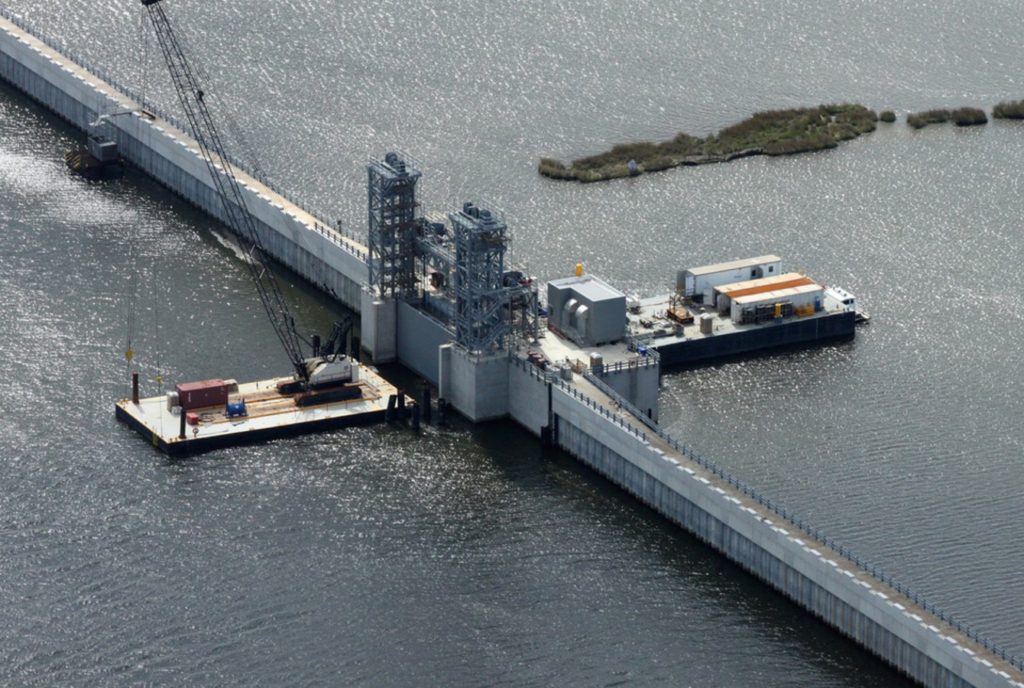Engineering Marvels: The IHNC Lake Borgne Surge Barrier
The IHNC Lake Borgne Surge Barrier: Introduction
In the realm of civil engineering, some projects stand as monumental achievements that not only showcase human ingenuity but also serve a critical purpose. One such marvel is the IHNC Lake Borgne Surge Barrier. Located in the heart of hurricane-prone Louisiana, this colossal structure is a testament to the power of engineering and innovation. In this blog post, we’ll delve into the technical intricacies of the IHNC Lake Borgne Surge Barrier, exploring its construction, purpose, and impact on safeguarding the vulnerable Gulf Coast region.
The Need for Protection
Before we dive into the technical aspects of the IHNC Lake Borgne Surge Barrier, it’s essential to understand the pressing need that led to its conception and construction.
Louisiana, situated along the Gulf of Mexico, is no stranger to the wrath of hurricanes and storm surges. The region’s unique topography, characterized by a web of marshes, estuaries, and interconnected water bodies, makes it especially susceptible to flooding during severe weather events. One such vulnerability hotspot was the Inner Harbor Navigation Canal (IHNC), a critical shipping route serving the Port of New Orleans.
Hurricane Katrina in 2005 served as a wake-up call for the Gulf Coast region, highlighting the urgency of fortifying its defenses against devastating storm surges. The catastrophic flooding that followed Katrina left a trail of destruction, underscoring the need for robust protective measures.

The Birth of a Mega-Project
In response to the lessons learned from Katrina, the U.S. Army Corps of Engineers embarked on a monumental undertaking—the IHNC Lake Borgne Surge Barrier. This mega-project aimed to provide New Orleans and its surrounding areas with a robust defense mechanism against storm surges and hurricanes.
Technical Facts
Dimensions: The IHNC Lake Borgne Surge Barrier spans an impressive length of 1.8 miles, equivalent to approximately 9,500 feet. It is a massive structure designed to thwart the powerful surges of hurricanes.
Height: The barrier reaches a towering height of 26 feet above sea level, making it a formidable obstacle against storm-driven floodwaters. The height was carefully calculated to withstand even the most extreme weather events.
Gates: The barrier consists of three massive flood gates, each weighing a staggering 150 tons. These gates are strategically placed at various points along the canal to control the flow of water.
Pilings: Over 4,000 concrete pilings form the foundation of the IHNC Lake Borgne Surge Barrier. These pilings, some as deep as 135 feet, provide the necessary stability to support the immense structure.
Materials: The barrier is primarily constructed from reinforced concrete, chosen for its durability and resilience in the face of corrosive saltwater and harsh weather conditions.
Construction Challenges and Solutions
The construction of the IHNC Lake Borgne Surge Barrier presented engineers with a myriad of challenges. Among the most significant were the marshy terrain, the need to minimize environmental impact, and the requirement for the barrier to remain operational during construction. Here’s how these challenges were overcome:
Marshy Terrain: The soft, marshy ground posed a significant obstacle to building a massive structure. Engineers used a technique called “surcharge preloading,” which involved placing massive amounts of fill material on the ground to compress and consolidate the underlying soil, providing a stable foundation.
Environmental Impact: The Gulf Coast is an ecologically sensitive area, home to diverse wildlife and unique ecosystems. To minimize the impact on the environment, the construction team employed careful planning and innovative engineering techniques. They also created new wetland areas to compensate for any lost habitat.
Operational During Construction: Ensuring that the canal remained navigable and operational during construction was crucial. The project was executed in multiple phases, with the installation of the massive gates occurring last to minimize disruption to maritime traffic.
How the Barrier Works
Understanding the technical details of how the IHNC Lake Borgne Surge Barrier functions is crucial to appreciating its effectiveness.
Gate Operation: The three massive gates of the barrier are strategically located to control the flow of water. During normal conditions, the gates remain open, allowing navigation through the canal.
Storm Surge Activation: When a hurricane approaches, the gates swing closed, creating a solid barrier across the canal. This action effectively blocks the path of storm surges, preventing them from inundating the city.
Pumping Stations: To manage rainwater and prevent flooding inside the protected area, the IHNC Lake Borgne Surge Barrier is equipped with powerful pumping stations. These stations can remove water from the protected side of the barrier and discharge it back into Lake Pontchartrain once the storm has passed.
The Impact on Disaster Mitigation
The IHNC Lake Borgne Surge Barrier, since its completion, has significantly improved the resilience of New Orleans and its surrounding areas against hurricanes and storm surges. It has effectively reduced the risk of catastrophic flooding, safeguarding lives, property, and critical infrastructure.
Moreover, the barrier has demonstrated its worth by withstanding several hurricane seasons, including the relentless challenges posed by Hurricane Isaac in 2012. This resilience underscores the effectiveness of the engineering design and construction.
Conclusion
The IHNC Lake Borgne Surge Barrier stands as a beacon of engineering excellence and a symbol of human determination to protect vulnerable regions from the destructive forces of nature. This colossal structure, with its impressive technical specifications and innovative construction methods, has fortified New Orleans against the ever-present threat of hurricanes and storm surges.
As we look to the future, the IHNC Lake Borgne Surge Barrier serves as a reminder of what can be achieved when engineers, scientists, and communities come together to tackle the most pressing challenges. It is a testament to the power of human ingenuity in the face of nature’s fury, a guardian that stands watch over the Gulf Coast, and an enduring example of how we can build a safer, more resilient world.
Don’t forget to check our other construction news, here.

